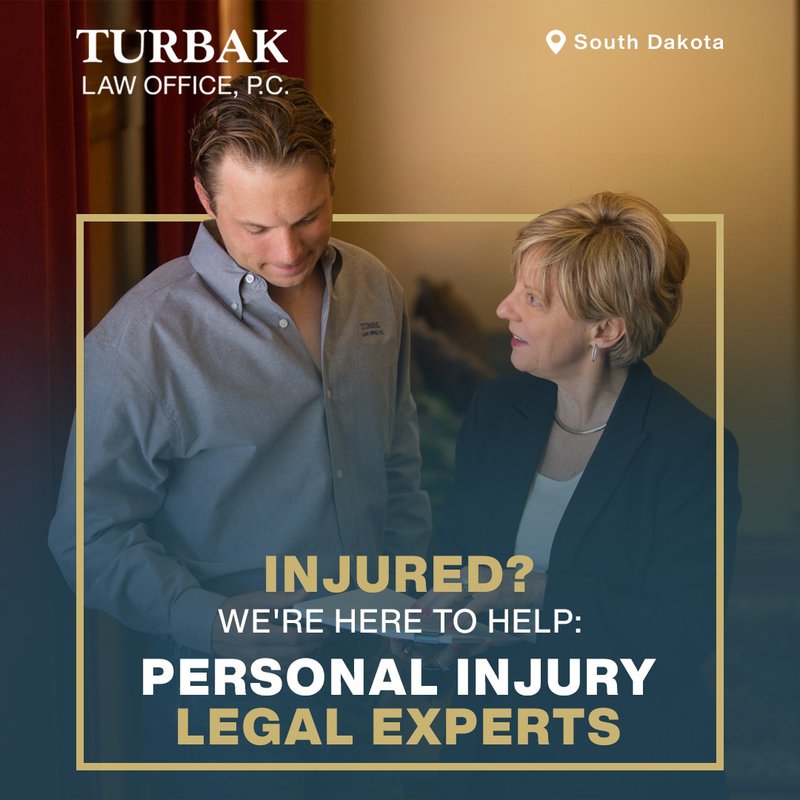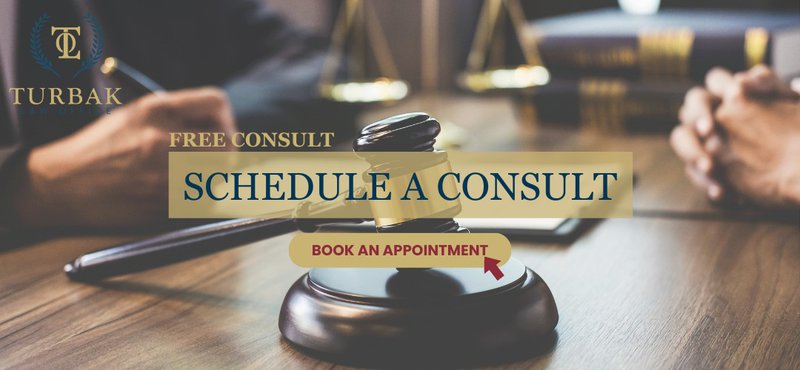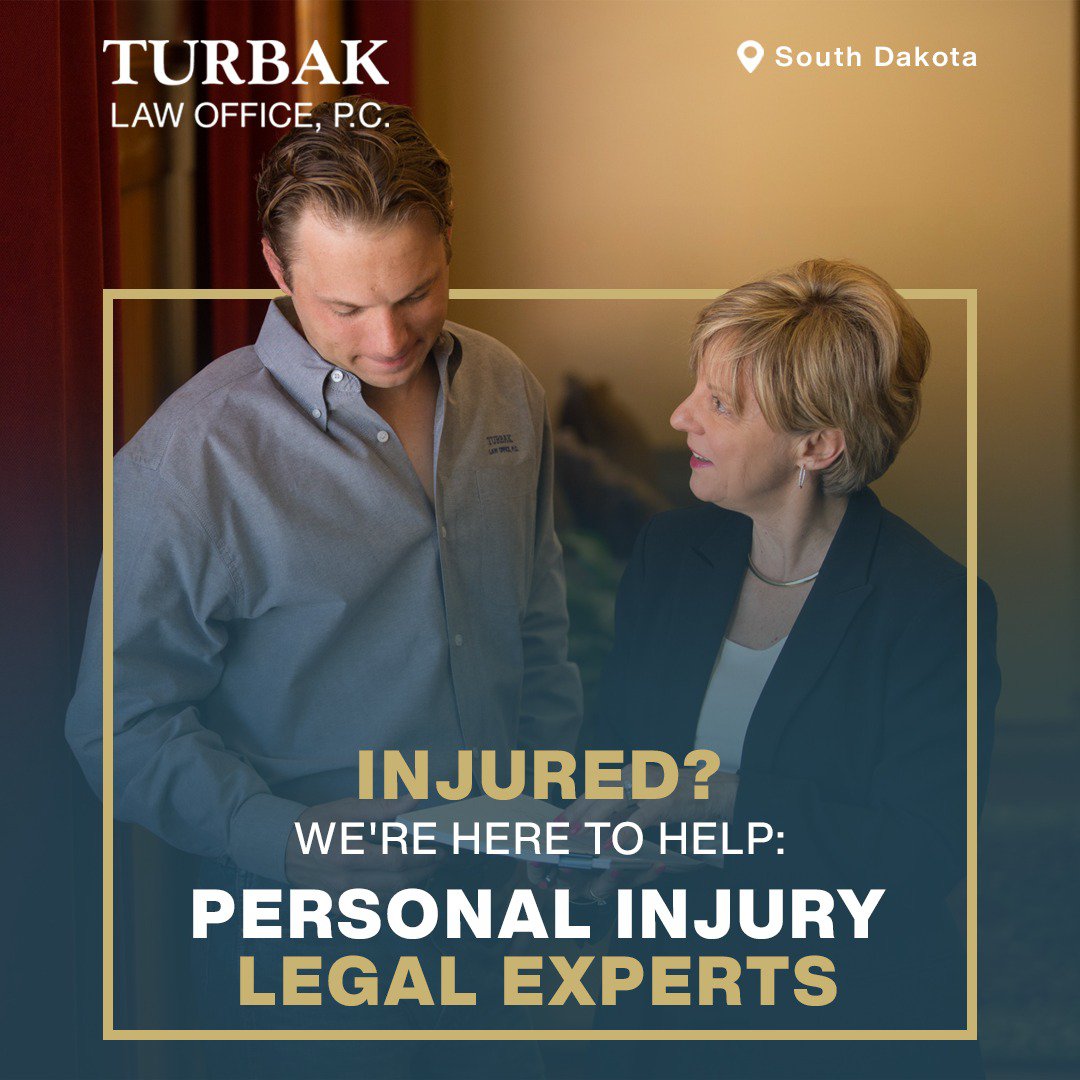If you've suffered an accident-related injury in South Dakota, it's essential to understand your rights and navigate the legal process effectively to safeguard your interests.
This guide offers an insightful overview of personal injury claims in South Dakota, shedding light on crucial factors to consider when pursuing rightful compensation for your injuries.
At Turbak Law, we are dedicated to guiding you through the intricacies of the legal system. We will ensure that you receive the just and fair treatment you deserve.

Some Types of Personal Injury Cases in South Dakota
Motor Vehicle Accidents
- Car Crashes: These involve collisions between two or more passenger vehicles. They can occur due to various factors, such as distracted driving, speeding, reckless behavior, or failure to follow traffic laws.
- Truck Accidents: Truck accidents often involve larger vehicles, such as commercial trucks or tractor-trailers. These accidents can result from driver fatigue, overloaded cargo, poor maintenance, or inadequate training.
- Motorcycle Accidents: They typically involve collisions between motorcycles and other vehicles. Motorcyclists are particularly vulnerable due to their lack of protection, and accidents can be caused by distracted driving, failure to yield, or road hazards.
Slip or Trip and Fall Accidents
These can result when individuals encounter hazardous conditions on someone else's property, leading to injuries. In such instances, premises liability law comes into effect. This legal concept holds property owners responsible for maintaining a safe environment. Sometimes there is no or an adequate hand rail. Other times, there is a hazzard that is difficult to detect, like broken tile in a checkout line that is covered by a rug.
Product Liability
Product Liability refers to the legal responsibility of manufacturers, distributors, or sellers for injuries caused by defective products. When individuals suffer harm due to a faulty or dangerous product, they can explore legal avenues to claim compensation. We have worked against manufacturers of dangerous products including dangerous firearms, dangerous farm equiptment, and failed manufacturing equiptment.
Types of Product Defects
Product defects can fall into three main categories, sometimes called the triangle of safety.Companies are supposed to design as safe of a product as possible. If a dangerous condition cannot be designed around, it should be guarded against. If, and only if it cannot be designed around nor guarded against, it should be warned of. Any of these can be the basis of a product liability claim.
- Design Defects: Design defects exist before the product is manufactured, making the entire product line inherently dangerous or defective. We have worked against gun manufacturers who have created firearms that will discharge even when a trigger is not pulled because the firing pin rests on the primer and a small jolt will cause the firearm to discharge. Some examples we have worked on include farm equipment manufacturers who improperly design a hitch so that the welding does not fully penetrate, leaving equiptment in the roadway creating a hazzard.
- Manufacturing Defects: These occur during the production process, making a particular product different from others in the same line and potentially hazardous. Sometimes the design is acceptable, but a failure in manufacturing leads to incomplete or improper manufacturing. For example, some tires use are not made to specifications leading to a high speed blow out.
- Marketing Defects: Marketing defects involve inadequate warnings, insufficient instructions, or misleading product labeling that fail to inform consumers about potential risks or proper product usage. There may be a spinning rod that has a guard, but still allows clothing or hair to become entangled.
Defective products pose various risks, including:
- Physical injuries or Death: Defects may result in cuts, burns, fractures, or severe outcomes like paralysis or organ damage or even death.
- Illness or health issues: Particularly in pharmaceuticals or food, defective products can cause adverse reactions, illness, or long-term health problems. For example, we have worked against manufacturers of Roundup, for causing non-hodkins lympoma and against Johnson and Johnson for creating vaginal mesh.
- Property damage: Faulty electronics or appliances, such as fires or explosions, can damage property.
Statute of Limitations
For personal injury claims, South Dakota's statute of limitations most commonly grants a three-year window from the injury date to initiate a lawsuit. If you fail to file a personal injury claim within this time frame, you can lose your right to pursue legal action altogether. This would prevent you from recovering any compensation for your injuries, regardless of the validity of your claim. Please note that the time frame for filing a personal injury claim may vary depending on the specifics of the case, such as when dealing with a public entity, where you might have to provide notice within 180 days.even though the actual statute of limitation seems much longer.
Importance of Contacting an Attorney Promptly
Promptly contacting a personal injury attorney after an accident or injury is crucial to comply with the statute of limitations. These legal professionals will assess your case, determine time limits, and swiftly protect your rights. They ensure the timely filing of necessary documents, gather evidence, and construct a robust case on your behalf. If another attorney has failed to diligently act within a statute of limiations and failed to preserve your claim, you may have a claim against that attorney and their malpractice carrier.
Contacting an attorney immediately also allows for a thorough investigation while evidence remains fresh and witnesses' memories are intact. It provides ample time to evaluate your damages, consult with experts if necessary, and negotiate with insurance companies or the opposing party prior to the initiation of litigation.
Proving Liability and Damages
Negligence is fundamental in personal injury cases, as it often forms the basis for establishing liability and gives you the right to pursue another person, legal entity, or insurance company. In South Dakota, negligence refers to the failure to exercise reasonable care that a prudent person would have exercised in similar circumstances, resulting in harm.
Generally speaking, a plaintiff must show the following elements to prove negligence in a personal injury case:
- Duty of Care: The defendant had to show care towards the plaintiff as part of their legal duty. This duty varies depending on the specific circumstances and the relationship between the parties. For example, drivers are required to follow traffic laws and operate safely to avoid harming others.
- Breach of that Duty: The defendant breached their duty of care by failing to meet the required standard. This could involve actions such as speeding, distracted driving, or failing to maintain safe premises.
- Causation: The defendant's breach of duty caused the plaintiff's injuries. It must be proven that the injuries would not have occurred if the defendant had not acted negligently.
- Damages: The plaintiff suffered actual damages due to the defendant's negligence. These damages can include physical injuries, emotional distress, medical expenses, property damage, and more.
Gathering Evidence to Support Your Claim
Gathering evidence is crucial in supporting personal injury claims in South Dakota. This evidence helps establish liability and demonstrates the extent of the damage suffered. It is essential to collect the following types of evidence:
- Human Story: What do your coworkers, friends, and family say about you? What have they noticed before and after an injury? This is the single most compelling kind of evidence that exists.
- Medical Records: Medical records can provide documentation of the injuries sustained and the treatment received. They establish a direct link between the accident and the injuries, helping to prove causation. They are often incorrect and misleading, but you should still be aware what they say.
- Witness Statements: Eyewitness testimonies can provide valuable insight into the accident's circumstances. Witness statements strengthen your case by corroborating your version of events.
- Photographs and Videos: Visual evidence, such as photographs and videos of the accident scene, can be compelling in demonstrating negligence and the extent of property damage or injuries.
- Expert Opinions: Professionals in relevant fields, such as accident reconstruction experts or medical specialists, can provide objective analysis and lend credibility to your claim.
Different Types of Compensation You Can Collect
When it comes to damages in South Dakota personal injury cases, various types of compensation are available:
- Pain and Suffering: Non-economic damages, such as physical pain, emotional distress, mental anguish, and loss of enjoyment of life, may be claimed to compensate for the intangible harms suffered.
- Disability and Disfigurement: Was your vision impacted? Did you lose strength or range of motion? Were you left with scarring or discoloration on your skin? These kinds of things can come in many shapes and forms.
- Reasonable Value of Medical Services Rendered: This includes the cost of medical treatment, hospitalization, surgeries, medications, rehabilitation, and any other healthcare-related expenses.
- Lost Wages: If the injuries caused the victim to miss work or resulted in reduced earning capacity, they may be entitled to compensation for the wages lost during their recovery period or in the future.
- Property Damage: If personal property was damaged in an accident, such as a vehicle, compensation can be sought to cover repair or replacement costs.
- Punitive Damages: In cases involving egregious conduct or intentional harm, punitive damages may be awarded to punish the defendant and deter similar behavior.
- Pain and Suffering: Non-economic damages, such as physical pain, emotional
Insurance Companies and Settlements
Insurance companies hold a prominent position in personal injury claims in South Dakota as they typically offer coverage and compensation for damages. But it is crucial to recognize that their primary objective is to limit payouts to safeguard their financial interests. Insurance companies only exist to make money.
The following are the strategies they employ to reduce compensation amounts:
- Quick Settlement Offers: Insurance companies can offer a quick settlement that seems appealing but falls short of adequately compensating for your injuries and damages. You think lawyers are ambulance chasers? Often, it is insurance adjusters who are trying to get a quick deal done in a hospital room.
- Delaying Tactics: Intentionally delaying the claims process to pressure you into accepting a lesser settlement.
- Disputing Liability: They can dispute or question their policyholder's liability to avoid paying any settlement at all.
- Using Recorded Statements: Insurance adjusters can use recorded statements against you, twisting your words or using them out of context to weaken your claim.
How To Deal With Insurance Companies
When dealing with insurance companies, it's essential to keep the following tips in mind:
- Be cautious when providing statements. Consult with a personal injury attorney before giving any recorded statements to the insurance company.
- Keep a detailed record of all communication with the insurance company, including dates, names, and summaries of conversations. Communicating in writing is usually the best approach.
- Do not rush to accept the first settlement offer. Assess the full extent of your damages and consult an attorney to determine whether it is fair and reasonable.
Benefits of an Experienced Personal Injury Attorney
Enlisting the expertise of an experienced personal injury attorney, well-versed in South Dakota personal injury law, can offer you several advantages:
- Knowledge and expertise: Attorneys specialize in personal injury law and deeply understand the legal process, insurance tactics, and fair compensation.
- Investigation and evidence gathering: Attorneys have the resources to thoroughly investigate your case, gather evidence, and establish liability and damages.
- Skillful negotiation: An attorney can negotiate with insurance adjusters to ensure you receive a fair settlement that fully compensates you for your injuries and losses.
- Litigation representation: If necessary, an attorney can represent you in court and navigate the complex legal proceedings.
Personal Injury Lawyers in South Dakota
Handling personal injury claims in South Dakota entails maneuvering a challenging legal landscape. Professional legal guidance empowers you to secure fair compensation and rebuild your life after sustaining injuries. Our injury lawyers at Turbak Law can help protect your rights, providing you peace of mind.
Contact us today to receive support for your personal injury case.


Leave a Reply